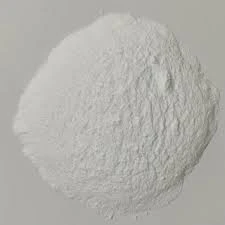Understanding Pentoxifylline Powder Uses and Benefits
Pentoxifylline is a medication primarily used to improve blood flow in patients with conditions affecting circulation
. Available in various forms, including a powder, it has gained recognition for its therapeutic potential in treating a range of vascular issues. This article explores the properties, uses, and benefits of pentoxifylline powder.Pentoxifylline belongs to a class of drugs known as xanthine derivatives. Its primary mechanism of action involves the inhibition of phosphodiesterase, leading to increased intracellular adenosine monophosphate (cAMP) levels. This action promotes vasodilation—widening of blood vessels—and reduces blood viscosity, facilitating improved blood flow. As a result, pentoxifylline is commonly prescribed for conditions such as intermittent claudication, a pain that occurs in the legs due to insufficient blood flow during physical activity.
Intermittent claudication is often associated with peripheral artery disease (PAD), a condition characterized by narrowed arteries that reduce blood flow to the limbs. Patients suffering from this condition usually experience cramping and pain during walking, which can significantly affect their quality of life. Pentoxifylline powder has been shown to alleviate these symptoms, allowing patients to walk longer distances without pain. Moreover, its anti-inflammatory properties may also play a role in promoting healing in chronic wounds, particularly in diabetic patients who are at risk of foot ulcers.
pentoxifylline powder

In addition to treating intermittent claudication, pentoxifylline powder is also used in managing other conditions linked to poor blood circulation. For example, it can help in treating conditions like diabetic retinopathy and certain circulatory disorders associated with venous occlusion. The versatility of pentoxifylline makes it a valuable addition to the pharmacological toolkit for healthcare providers.
The administration of pentoxifylline as a powder allows for flexibility in dosing and is often compounded into various formulations, including capsules and intravenous solutions. Dosage typically varies based on the severity of the condition and individual patient needs. It is essential for patients to follow their healthcare provider’s instructions regarding dosage to maximize effectiveness while minimizing potential side effects, which may include gastrointestinal disturbances, dizziness, and headache.
In conclusion, pentoxifylline powder is a significant therapeutic agent for improving circulation and alleviating symptoms of vascular-related conditions. Its ability to enhance blood flow and reduce pain in patients with intermittent claudication underscores its importance in clinical practice. As ongoing research continues to unveil more about this medication, healthcare providers remain optimistic about its role in improving patient outcomes across a range of disorders related to poor blood circulation. As with any medication, potential users should always consult with a healthcare professional to discuss its appropriateness for their specific health conditions.

